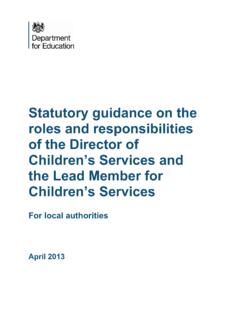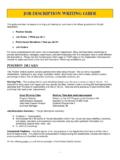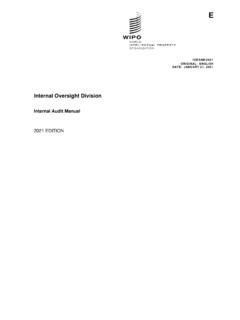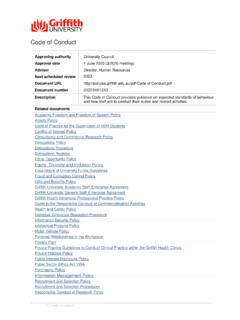Transcription of NHS England
1 OFFICIAL. NHS England Emergency Preparedness, Resilience and Response Incident Response Plan (National). OFFICIAL. OFFICIAL. OFFICIAL. Version Page 2 of 49 July 2017. OFFICIAL. NHS England Incident Response Plan (National). Version number: First published: 22 March 2013. Updated: 21 July 2017. Prepared by: NHS England National Emergency Preparedness, Resilience and Response Unit Classification: OFFICIAL. This plan should be read in conjunction with the following documents: NHS England Emergency Preparedness, Resilience and Response Framework NHS England Incident Coordination Centre (National) Standard Operating Procedures (OFFICIAL: SENSITIVE, not publically available). NHS England Incident Management Team (National) Handbook (OFFICIAL: SENSITIVE, not publically available). NHS England EPRR Communications Protocol This information can be made available in alternative formats, such as easy read or large print, and may be available in alternative languages, upon request.
2 Please contact 0300 311 22 33 or email stating that this document is owned by EPRR Unit, Operations and Information. OFFICIAL. Version Page 3 of 49 July 2017. OFFICIAL. Contents Contents .. 4. 1 5. 2 Roles, accountabilities and 7. NHS England Chief Executive .. 7. NHS England Accountable Emergency Officer .. 7. NHS England Incident Director (National) .. 7. NHS England Deputy Incident Director (National) .. 8. NHS England Strategic Adviser .. 8. Other Roles .. 8. Incident Manager (National) .. 8. Incident Single Point of Contact (National) .. 8. Incident Coordinator (National) .. 8. IMT(N) Operational Support Officer .. 8. Strategic Communications Lead .. 9. Incident Communications Manager (National) .. 9. Press Office Lead .. 9. 3 Alerting .. 10. Initial Alerting .. 10. NHS England Internal Staff Alerting .. 10. Alerting External Agencies.
3 11. NHS England Incident Levels .. 11. Subsidiarity .. 11. 4 Activation .. 13. Situational Risk Assessment Criteria .. 13. Authority to 14. Activation of the IMT(N) and ICC(N) .. 14. 5 16. NHS England Incident Management Team (National) .. 16. Primary Functions of IMT(N) .. 16. Records Management .. 17. Shift Arrangements .. 17. 6 Escalation and 19. 7 Stand Down .. 20. Administration .. 20. Debriefs and 20. Lessons 21. 8 Review, Maintenance, Training and Exercising .. 22. Annex A Action Cards .. 23. OFFICIAL. Version Page 4 of 49 July 2017. OFFICIAL. 1 Introduction The NHS needs to be able to plan for, respond to and recover from a wide range of incidents, emergencies or disruptive challenges that could impact on health or patient care. These could range from extreme weather conditions, to an outbreak of an infectious disease, or a major transport incident.
4 The Civil Contingencies Act 2004 (CCA) and the NHS Act 2006 as amended by the Health and Social Care Act 2012 (NHS Act 2006 as amended) requires NHS England , NHS organisations and providers of NHS funded care to demonstrate that they can deal with such incidents while maintaining services to patients. This programme of work is referred to in the health community as emergency preparedness, resilience and response (EPRR). During times of pressure and in response to incidents and emergencies, NHS. organisations require a mechanism to operate enhanced leadership and decision making in a structured manner. This structure provides a clear leadership pathway with accountable decision making that relies on an accurate and timely shared understanding of the situation which can be problematic in a potentially information poor environment.
5 The structured approach to leadership under pressure is commonly known as command and control'. The NHS England Incident Response Plan (National) (IRP(N)) is the overarching generic plan that details how NHS England , as a single organisation, reviews and responds to any health related incident or emergency at the national level. It is intended for use by NHS England Executive Management Team, the Director of NHS. Operations and Delivery and the National Head of EPRR and acts as a reference and signposting document to provide appropriate guidance in planning and response. The IRP(N) recognises that the NHS follows the principles of subsidiarity in that the management of an incident should be at the level closest to the people affected by the incident as is reasonably practical. This plan sets out the NHS England national response to an incident within the NHS.
6 Regional and Director of Commissioning Operations (DCO) teams', at a local level, incident response plans will be modelled on this National plan to ensure consistency and standardisation of NHS England 's response plans and functions across the NHS. This Plan enables NHS England to deliver its corporate responsibilities in response to any incident or disruptive challenge. The key objective is to provide confidence through effective oversight, direction and co-ordination of the NHS to enable it to provide a resilient response to incidents and emergencies that could have a national impact upon the NHS. This will be achieved by working with and supporting the Department of Health (DH), NHS England regional and DCO teams, Public Health England (PHE) and other collaborating agencies, as appropriate. This plan does not cover the NHS England central response to an internal business continuity incident.
7 NHS organisations are required to fulfil the requirements as Category 1 or 2. responders, as appropriate, under the CCA and the NHS Act 2006 (as amended) as well as the NHS England Emergency Preparedness Resilience and Response OFFICIAL. Version Page 5 of 49 July 2017. OFFICIAL. Framework and to apply the principles of integrated emergency management in their preparation for and in response to incidents and emergencies. Aligned to the NHS response, operating at the national and strategic level, NHS. England is responsible for providing national oversight, direction and co-ordination of the NHS response to health incidents and emergencies where appropriate. The NHS England IRP(N) is supported by its related Standard Operating Procedures (SOPs) and Incident Management Team (National) Handbook which contain the operational detail and procedures to be put in place during a response.
8 The NHS England IRP(N) details roles, accountabilities and responsibilities and then is structured in five sections, which cover the recognised phases of response: Alerting Activation Operation Escalation and De-escalation Stand Down The final section covers review, maintenance, training and exercising. Annex A contains Action Cards for the defined roles. OFFICIAL. Version Page 6 of 49 July 2017. OFFICIAL. 2 Roles, accountabilities and responsibilities This section describes the roles, accountabilities and responsibilities of those functions required to deliver a response under the NHS England IRP(N). The actual roles required for response may vary depending upon the level of response and the nature of the incident and in smaller scale incidents roles may be combined in line with required staffing. Full details of roles, accountabilities , responsibilities and associated actions can be found on the Action Cards for each role at Annex A.
9 NHS England Chief Executive Overall accountability for the direction of an incident rests with the NHS England Chief Executive (CE). In the absence of the CE, this responsibility defaults to the NHS England Accountable Emergency Officer (AEO). The CE will delegate responsibility to the AEO to oversee NHS responses to health related incidents in the majority of national (level four) incidents. The CE has national security vetting at the Developed Vetting (DV) level. NHS England Accountable Emergency Officer The AEO is accountable to the CE for the national direction and delivery of the NHS. response to an incident. As appropriate the AEO will either assume the role of NHS. England Incident Director (National) (ID(N)) or delegate this role to an appropriate person. The AEO is ultimately responsible for determining the escalation/de- escalation of the national NHS response.
10 The AEO should have national security vetting at the Developed Vetting (DV) level. The AEO will be supported in their role by a Senior Responsible Officer (SRO) for EPRR. The SRO may deputise for the AEO in their absence. NHS England Incident Director (National). Once appointed, the ID(N) is the single Strategic Commander for NHS England across the organisation and is accountable to either the CE or AEO, as appropriate. The ID(N) has overall strategic command of the NHS response to an incident and will lead the NHS England Incident Management Team (National) (IMT(N)). The ID(N) is responsible for the sign off of all advice, briefing documents and communications relating to the incident. Additionally the ID(N) is responsible for activating the lessons identified process. They will have appropriate national security vetting to a minimum of Security Check (SC) level.

















